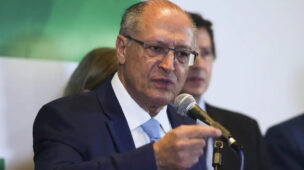Tempo de leitura: 3 minutos
Joel Ramaphoi – Director, Investor Attraction and Monitoring at the newly established Special Economic Zones (SEZA) Botswana speaks with so much confidence and passion when it comes to this new economic development vehicle in Botswana. He describes SEZs as gentle revolution which will bring comparative wealth and better living to citizens of Botswana. But what is this unknown animal called SEZA? Ramaphoi says SEZAs are a trade capacity development tool with the goal to promote rapid economic growth using tax and business incentives to attract Foreign Direct Investment (FDI), skills and technology.
“SEZAs provide a medium not only for FDI attraction but also for local industries to improve their export through proper channel and with the help of new foreign partners”, Ramaphoi told newspapers editors in the capital Gaborone last week. Ramaphoi, together with a few other founding staff members of SEZA including the Acting Chief Executive embarked on an ambitious programme to set up eight Special Economic Zones across the country.
Once fully operational, the initial eight zones, Sir Seretse Khama International Airport, Fairgrounds, Pandamatenga, Palapye, Lobatse, Tuli Block, Francistown and Selebi Phikwe are expected to boost economic diversification and bolster Botswana’s exports.
According to Ramaphoi, the SSKI area will mainly focus on specialised & light manufacturing, diamond beneficiation, aerospace, aviation and cargo. The Fairgrounds area, still in the capital Gaborone has been earmarked for Financial Services with Lobatse – which houses the head office as well as one of the abattoirs of the Botswana Meat Commission, will target the beef, leather and biogas industries. The greater Palapye will focus on integrated coal value addition while ghostly Selebi-Phikwe will specialise in mineral beneficiation. On the other end, Tuli Block will target horticulture and other agribusinesses while Francistown is earmarked for mining supplies, services and logistics hub. Lastly, Ramaphoi says the Pandamatenga area will specialise in integrated farming, agro-business and food processing.
While Ramaphoi remain optimistic about the future of SEZs, he did not shy away from admitting that an operational principle of cross – coordination is key to the success of SEZA. His admission comes at a time when more than three other government agencies have also been given a similar role of promoting national investment. These includes amongst other SPEDU, Botswana Development Corporation and Botswana Investment and Trade Centre (BITC). Both institutions typically operate as autonomous agencies, with both reporting in through the same Ministry of Trade and Investment. “Smart partnership with them is a key success”, Ramaphoi said.
While SEZA also await the separation of roles amongst the sister parastatals, it is at the same time likely to face another hurdle in acquisition of land. In Francistown, one of the targeted areas there is a huge shortage of both developed and undeveloped land. The local authorities at the second city maintain that the land owned by Tati Company was acquired fraudulently from the natives during the colonial era.
Tati Company a controversial British company which is owned by the Bennet Glazer Will Trust, incorporated in South Africa currently owns huge chunks of land in the North East District and Francistown.
Ramaphoi however told journalists that already, SEZA has acquired land near the Francistown Airport which would allow the authority to kick start its first project. He admitted though, that when it comes to land acquisition, “size matters” and that availability of it is key to the success of SEZs.
With a few key positions already filled either temporarily or substantively, SEZA Ramaphoi says the country will continue to learn a lot from countries that excelled in implementation of Special Economic Zones, precisely China.
Ramaphoi observed that Botswana could pluck a leaf or two from the tale of a seemingly miraculous and inspirational economic revolution that overhauled Shenzhen city into China’s third biggest city. He said success of Shenzhen city was demonstration that set stage for radical reforms across China. “Focus needs to be on fundamentals like empowered locals, factor market reforms, law and order, education reforms….etc”, Ramaphoi said.






Os comentários foram encerrados, mas trackbacks e pingbacks estão abertos.